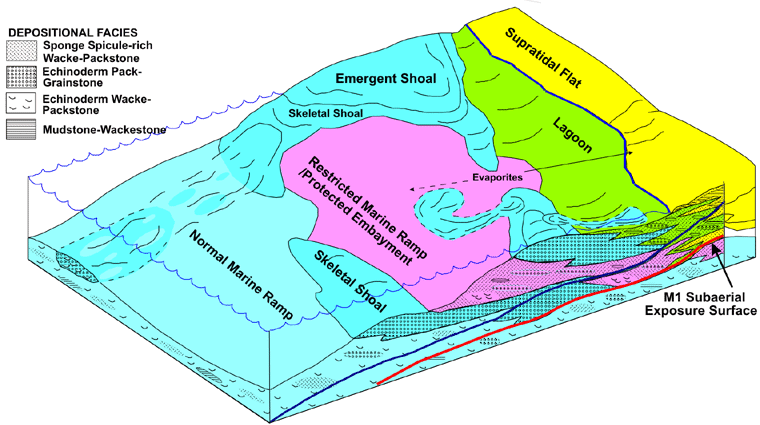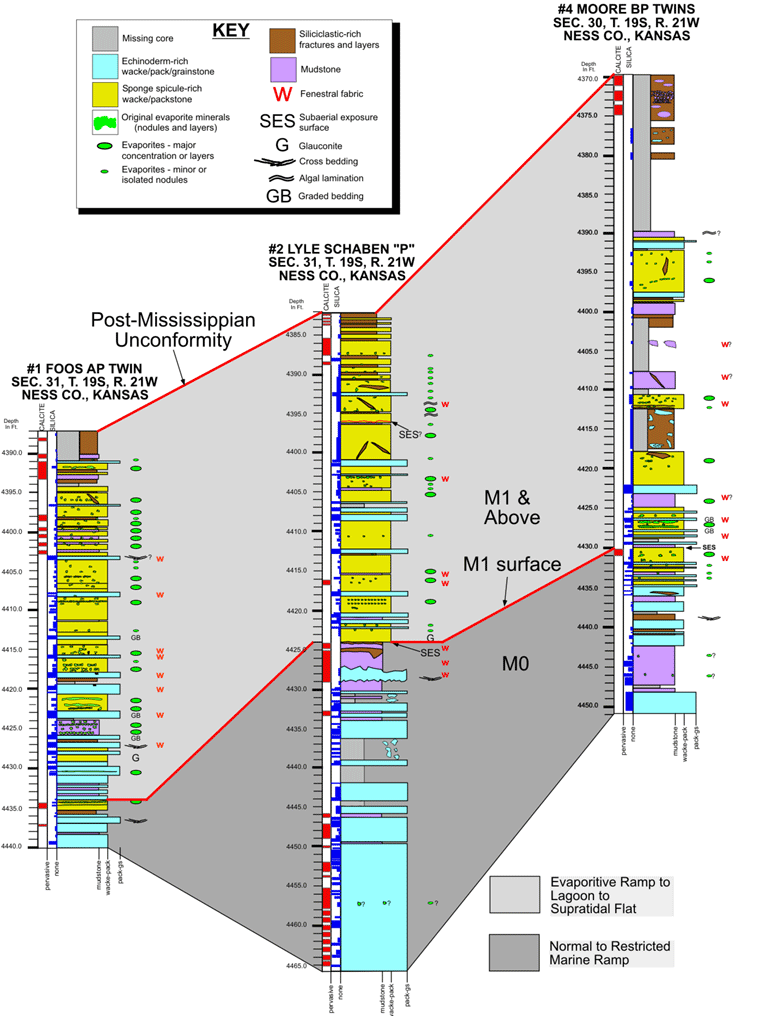Early Mississippian Paleogeography in Kansas

Interpreted Main-Inner Shelf Environments based on Schaben Cores

Schaben Deposition
The abundance of EWPG facies with other diverse fauna, abundance of burrowing organisms and only rare occurrence of evaporites in the M0 unit suggest deposition in relatively normal to somewhat restricted marine environments.
The abundance of SWP and MW facies, relative rarity of EWPG, and abundance of evaporites in M1 and units above suggest deposition in restricted, evaporitive ramp, lagoon or supratidal environments. Burrow mottling indicates conditions sufficient to support organisms that reworked the sediments. Evaporite characteristics (radiating blades, isolated coalesced nodules, and coalesced vertically elongate nodule layers) indicate formation in a supratidal to shallow subaqueous setting at or just below the sediment water interface. Local fenestral fabric indicates at least intermittent subaerial exposure.
The change between the M0 unit and the M1 unit is marked by a subaerial exposure surface. This surface and the strata immediately below for several meters show significant alteration. A coarse calcite cement and replacive poikilotopic calcite is associated with the M1 surface and occurs variably throughout strata below this surface to the bottom of the cores. A similar calcite cement and calcite replacement in the upper five feet of the cores is presumably a separate event related to post-Mississippian subaerial exposure.

|
|
e-mail : webadmin@kgs.ku.edu
Last updated May 2003
http://www.kgs.ku.edu/PRS/publication/2003/ofr2003-32/P2-04.html
